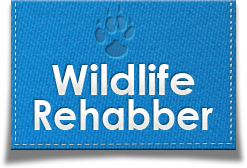What the heck is competitive exclusion? Simply put, it is using “good” bacteria to control “bad” bacteria. It is a naturally occuring process in a bird’s body in which the microflora in a bird’s gut gives it some immunity from infection. The “good” bacteria basically blocks all the sites on the intestinal walls where infection … Continue Reading
Formulating a diet is a fairly complex process. It is much easier to use established diets that have already been researched. But it is good to understand how a diet is formulated. It will help you to understand why certain ingredients and their ratios are important. Knowing how to formulate a diet will also help … Continue Reading
The Formula for Nestling Songbirds MacMilk Crop Milk Replacer formula for doves & pigeons MacDiet Insect Nutritional Primer
Longevity RecordsLife Spans of Mammals, Birds, Amphibians, Reptiles, and Fish; James R. Carey and Debra S. Judge; Odense University Press, ISBN 87-7838-539-3 Birds Table 2. Record Life Spans (years) of Birds ((+) indicates that individual was still alive at the time that life span was recorded) Order/Family Genus/Species Common Name Wild Capt. M/F Reference Anseriformes Anatidae … Continue Reading
Crop milk is produced by a sloughing of fluid-filled cells from the lining of the crop. A hormone called Prolactin stimulates the growth and development of specialized epithelial cells within the crop. 1, 7 Prolactin levels in the adult begin to increase during the last half of egg incubation and remain high until 4 days … Continue Reading
Please Note: This information is an aid to general treatment following initial exam. This is a condensed listing and does not include all possible treatment methods, nor does it replace proper veterinary care. EXTERNAL PARASITES using a soft bristle toothbrush, gently stroke kitten flea powder into fur/feathers. For heavy flea or mite infestation, wrap animal … Continue Reading
Osmosis Osmotic Pressure Hypertonic Isotonic Hypotonic Distribution of Fluids Dehydration Percentage of Dehydration Fluid Replacement Composition of common replacement fluids Osmosis — passive transport of water across a semipermeable membrane. Water tends to move across the membrane until the solute concentration (the amount of solids) on both sides are the same. When water concentration is … Continue Reading
Suture materials The purpose of a suture to hold a wound together in good apposition until such time as the natural healing process is sufficiently well established to make the support from the suture material unnecessary and redundant. Choice of a suture will depend on: Properties of suture material
These links will eventually be incorporated into the Rehab Resources section: Avian Baseline hematology values Avian Blood Cell Morphology Longevity Records Ornithology Lecture Notes Habits and Management Index Avian Anatomy Anatomy Slide Show (127 images) Anatomy Slide Show Individual Index Air Sacs Diagram Avian Respiration Inhaled Anethesia for Birds Bent Life History Series ONLINE! Chicken … Continue Reading
After years of rountinely visiting site after site researching wildlife-related data, we’ve created a one-stop research link page for the best research sites on the internet. Whether you’re looking up life history information that includes descriptions, behaviors and habitat or want to review diseases/illnesses, related procedures and/or nutritional requirements, these searches will help you find … Continue Reading
